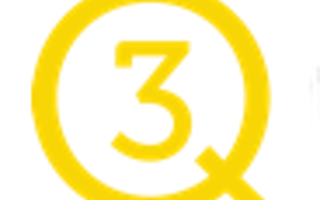By Jesse Morris, Account Director
“How do we know that display campaigns are doing anything?” “Those people probably would have converted anyway!” We’ve all heard some version of these questions/statements from our clients, and they are very valid concerns. In the past, the only way to answer them was to segment out a geo-region, run a PSA test, or try audience segmentation, which is difficult, hard to measure, expensive, and prone to having the data corrupted by outside forces like earned media and seasonality.
But now, if you have enough conversion volume, there is another option in Google AdWords. It’s called a Conversion Lift Test (sometimes also referenced by the much cooler name, Ghost Ads.) Here I want to give you an overview of how to run a Google Conversion Lift Test, as well as an explanation for why you cannot run this test for programmatic vendors.
What is it?
The Conversion Lift Test measures causal differences in conversion behavior and site visit behavior. Basically, Google creates a control group out of the pool of users who would have seen your ad, but instead of showing your ad, the control group sees the next ad in the auction. To wildly over-simplify, they then see if those users converted anyway. If they did, then the display ad would not have had an effect and was not incremental. If they do not convert, then maybe it would have been incremental. They then compare the control group’s behavior to the overall group.
Here’s a handy visual:

How it works
Your dedicated Google team submits your client to their product team for review. If you do not have a dedicated team, you can't run this test right now (sorry to get your hopes up). If you receive approval for the beta, it will be managed internally by the Google team. This is very much a "black-box" process, and we haven’t gotten much in the way of updates from them while the tests were running.
The timeline is 8-13 weeks for the test to run and for the data to be analyzed. At the end of that time period, you will receive a deck and presentation on what the data means.
Technical requirements
While there’s technically no minimum spend requirement, the campaign(s) to be tested need to be able to gather at least 500 click-through + view-through conversions during the test duration (3-4 weeks). So, it’s likely that there will be a significant financial investment in this test, and it won’t be feasible for smaller-to- medium-sized clients most of the time.
Here’s a breakdown of the technical requirements as of the last few lift tests we ran. Of course, Google is constantly updating, so these could be subject to change.
- Campaigns must be served through AdWords and bought via auction. Not compatible with reserve media.
- Conversion lift can measure uplift for conversions and pageviews.
- To measure conversion uplift, client must use AdWords conversion tracking w/ conversion pixel that fires unconditionally. Not compatible with GA import, offline import, or 3rd-party tracking.
- Caveat - can use MCC-level remarketing lists
- To measure pageview uplift with GDN, client must have AdWords Remarketing Pixel generated from the CID you’re using for the Conversion Lift study OR at the MCC level using MCC list sharing. The pixel has to be implemented on every webpage of client’s site.
- No separate concurrent Brand Lift or Brand Interest studies on the same campaign(s).
- 500 conversions needed in a 4-week period for statistically significant results.
Ghost Ads in Programmatic
The short answer is no, it isn't possible. The reason that it’s not possible outside of GDN is the inability to pixel impressions you haven't purchased. Since GDN controls both the sale and the delivery of the ads, they're able to pixel the would-have-been exposed group on behalf of an advertiser who is not purchasing the impression. The other vendors we've spoken to are able to set up A/B experiments, but not pixel users who didn't see the advertiser’s ad (whether that ad is for the advertiser or a PSA).
I hope this was helpful! Feel free to put questions in the comments.






.png)